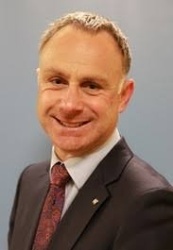Pay rises for New Zealand Defence Force personnel
18 April 2001 Media Statement
Early Budget Announcement: Pay rises for New Zealand Defence Force personnel
"The pay and allowance adjustments announced today are recognition of the fact that the greatest assets of the New Zealand Defence Force are its people," the Minister of Defence Mark Burton said.
Pay and allowance increases targeted at lower paid ranks and identified technical trades with recruitment and retention problems have been announced today.
Over 80 percent of uniformed defence force personnel will receive increases. The average increase is 5 percent and individual increases range from 1 to 19 percent.
The changes will take effect from May the first.
"The Labour/Alliance Government has made additional funding available to the Chief of Defence Force to allow him to implement targeted pay increases," Mark Burton said. "In the past, most pay increases have had to funded out of existing baselines.
"The new expenditure announced today follow a robust assessment of remuneration levels, and recruitment and retention issues. After consultation with his three service chiefs, the Chief of Defence Force, as the employing authority for Service personnel, has carried out his responsibility to determine salary levels.
"It is part of a rational and systematic approach to setting priorities for Defence spending," Mark Burton said. This will be further demonstrated next month when the government announces a series of decisions on future capabilities."
A major part of the pay adjustment is a move towards a flat rate for the military factor. (The military factor is a payment in addition to base pay that recognises the unique liabilities of military service, such as service discipline, compulsory postings, on call 24 hours, etc). The military factor will now be a minimum of $4508 pa, rather than a percentage of base pay. Consequently, lower paid ranks benefit the most from this change.
The most junior ranks such as Privates, Aircraftsman and Able Seamen will receive increases of between 6 and 13 percent.
"I am pleased that the
Government has been able to make the funding available for
these salary increases.
"After years of decline, we have taken a significant step towards bringing pay rates into line with comparable occupations in the private sector. The junior ranks of our army, navy and airforce have demonstrated time and time again their professionalism and commitment, and they deserve this recognition," Mark Burton said.
Facts and Figures on the NZDF remuneration increases
The salary increases will be paid on May 17,
and will be backdated to May 1 2001. The cost has been met
by the Government providing additional funding to the NZDF
for the current 2000/2001 financial year of $3
million.
May's Budget will include an increase to NZDF
baselines of $18.4 million for the 2001/2002 financial year
to meet the ongoing cost of the salary
increases.
Targeting:
Navy has specifically targeted
technical trades, hydrographers, divers, communicators,
medics and selected officers.
Air Force has targeted technical trades, aircrew and medics.
Army has targeted SAS, technical trades, armoured vehicle crewman, movement operators, medics, communication operators and intelligence operators.
Examples:
There is a wide range of salary
adjustments across the NZDF. The individual increases range
from $563 to $7,313 pa.
All ordinary and able seaman, aircraftsman and privates (except those still under training) will receive a minimum increase of $1688 pa. The new median salary for army privates will be $26,438 pa.
The largest increase is $7313 for a number of SAS officers. The biggest increase in percentage terms is 19% for SAS Lance Corporals.
Staff Sergeant Telecommunications Engineers will receive an average increase of $5,063 (11%), taking their median salary to $45,560.
Flight Sergeant Air Electronics Operators will receive an annual increase of $3,938 (8%), taking their median salary to $51,751.
Squadron Leader Qualified Flying Instructors will receive an annual increase of $3,938 (6%), taking their median salary to $73,126.
Leading Aircraftsman Machinists will receive an annual increase of $2,813 (9%), taking their median salary to $33,750.
Weapons Engineers and Marine Engineers at the rank of Able Seaman and Leading Seaman each receive an increase of $2813, 11% and 7% respectively.
Divers at the rank of Leading Seaman receive $2813, which is an 8% increase and takes their new median salary to $38,800.
Petty Officer Medics receive $5063
(13%), taking their median salary to
$43,875.


 Gordon Campbell: On Miserly School Lunches, And The Banning Of TikTok’s Gaza Coverage
Gordon Campbell: On Miserly School Lunches, And The Banning Of TikTok’s Gaza Coverage Green Party: Greens Welcome Cross-party Approach To Climate Adaptation
Green Party: Greens Welcome Cross-party Approach To Climate Adaptation Government: Climate Change – Mitigating The Risks And Costs
Government: Climate Change – Mitigating The Risks And Costs Greenpeace: Protest March Against Fast-track Bill Announced For Auckland
Greenpeace: Protest March Against Fast-track Bill Announced For Auckland Wellington Office of the Mayor: Mayor Responds To Housing Minister’s District Plan Decision
Wellington Office of the Mayor: Mayor Responds To Housing Minister’s District Plan Decision Stats NZ: Have Your Say On Modernising The Census
Stats NZ: Have Your Say On Modernising The Census NZ Government: Therapeutic Products Act To Be Repealed
NZ Government: Therapeutic Products Act To Be Repealed


